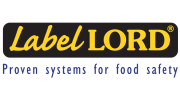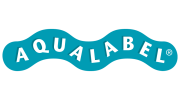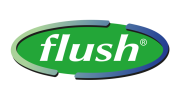Extra attention for food safety during the summer
During the summer months, the number of food poisoning as a result of preparation and storage conditions increases compared to the rest of the year. This is caused by higher temperatures having a negative effect on food. Certain harmful bacteria function better at high temperatures and can cause a lot of damage, especially at temperatures higher than 25 degrees. Therefor LABELLORD demands extra attention for food safety during the coming months.
Food poisoning
Toxic substances produced by fungi or bacteria can cause food poisoning. Common causes are Salmonella, Bacillus Cereus, Staphylococcus Aureus and Campylobacter. A lot of bacterial species function best in foods that are served cold and contain animal proteins, for example dairy products, eggs, raw fish and raw meat. The symptoms of food poisoning, including diarrhoea, abdominal pain and cramps, occur suddenly and usually within eight hours after the infection. In most cases the symptoms disappear quite soon, but in some cases medical intervention is necessary. Pregnant women, little children and the elderly form a vulnerable group and are at higher risk of food poisoning.
Most food poisoning caused in professional kitchen
A large majority of food poisonings is caused by food made in professional kitchens, such as restaurants, cafeteria and canteens. Of course, a professional kitchen has a much larger range and therefore by making a mistake more people will become ill compared to when this happens at home. Statistically, 70% of patients sustain food poisoning through a professional kitchen and only 30% through their own kitchen at home. Obviously food poisoning is bad for the patient, but in addition it is also bad for the image of the restaurant, cafeteria or canteen where the poisoning is caused. The guest/patient can report the incurred food poisoning to the Food Safety Authority (FSA) and he or she can request the FSA to conduct an investigation into the kitchen in question. When the FSA receives sufficient requests, a bacteriological investigation will take place in which an inspector takes samples from the kitchen in question. If the investigation reveals unhygienic circumstances, the FSA may require to take corrective measures and impose fines.
Hygiene
Based on the above, we can state that hygiene in the kitchen is of great importance. Therefore a hygiene code has been drawn up for each sector: a guide with all the rules to monitor food safety and hygiene. Working according the hygiene code means the company meets the legal requirements of food safety. Furthermore, this exudes professionalism to the consumer: after all, the producer makes every effort to ensure that the consumer can eat safely. LABELLORD products can help to comply with the hygiene code and provide a simple solution to comply with all food safety legislation. In additions, in order to determine the current stats of hygiene in your kitchen, you can contact us for a Hygiene Audit. This audit provides a clear overview of all areas of improvement in your kitchen regarding food safety. All legally required components are assessed and clearly reported. You can decide for yourself which aspects should be dealt with first.
Source: voedingscentrum.nl, safefoodfactory.com, eten-en-drinken-infonu.nl, food.gov.uk




